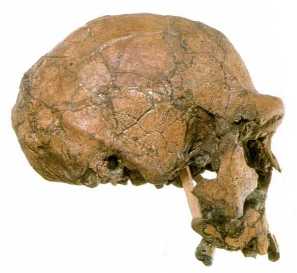No, it is not. If it were, there would be no problem finding transitional fossiles from ape to man, for example. Or of things that crawled out of the sea, or into it, whichever the theory points at present. There should be thousands of examples, but instead, scientists point to a half skull here and a jawbone there. The evidence is lacking...imho.
I personally don't put much stock in evolution because if all there is was created by random mutation, the fossil record should be crammed full of things that did not make it, and it isn't. That's my two cents.
First of all, you need to understand the process of fossilization and understand the extreme conditions it takes to fossilize an animal. If a carcass isn't fully eaten and scattered across a large area it then has to be in the right place at the right time for fossilization to take place. I'm sure there are an untold number of species we'll never know about.
...there would be no problem finding transitional fossiles from ape to man, for example. This is a transitional. Note its position in the chart which follows (hint--in the upper center):
Fossil: KNM-ER 3733

Site: Koobi Fora (Upper KBS tuff, area 104), Lake Turkana, Kenya (4, 1)
Discovered By: B. Ngeneo, 1975 (1)
Estimated Age of Fossil: 1.75 mya * determined by Stratigraphic, faunal, paleomagnetic & radiometric data (1, 4)
Species Name: Homo ergaster (1, 7, 8), Homo erectus (3, 4, 7), Homo erectus ergaster (25)
Gender: Female (species presumed to be sexually dimorphic) (1, 8)
Cranial Capacity: 850 cc (1, 3, 4)
Information: Tools found in same layer (8, 9). Found with KNM-ER 406 A. boisei (effectively eliminating single species hypothesis) (1)
Interpretation: Adult (based on cranial sutures, molar eruption and dental wear) (1)
See original source for notes:
Source: http://www.mos.org/evolution/fossils/fossilview.php?fid=33

Source: http://wwwrses.anu.edu.au/environment/eePages/eeDating/HumanEvol_info.html


